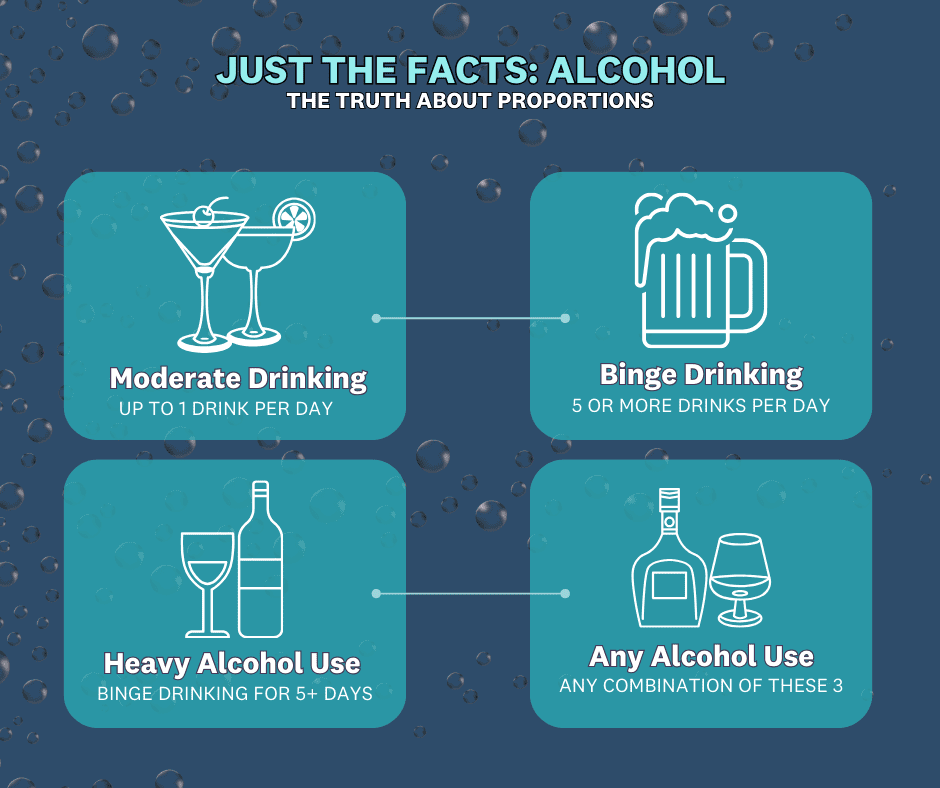In a world filled with curiosity and uncertainty, understanding the impact of alcohol is essential for all ages. Whether it’s the influence of stress on decision-making, how alcohol affects the brain, or knowing that there’s no “safe” amount of alcohol for anyone under 21, this journey equips everyone with valuable knowledge. No matter your age, this information is for you. Let’s cut through the noise and break down the real facts about alcohol.
Why Talk About Drinking?
During times of crisis, people often turn to alcohol as a way to cope. So why do we need to keep talking about it? Even though you’ve heard the warnings, the conversation is more important than ever.
People have long used alcohol to relax or reduce inhibitions. But with anxiety, fear, and boredom at an all-time high, alcohol use as a coping mechanism has surged. The problem is that isolation increases psychological distress, and alcohol, which is a depressant, worsens this. While it might initially feel like a stimulant, alcohol slows down the central nervous system once it hits the brain, impacting how you think, act, and feel while lowering blood pressure and heart rate.
Finally, there are no recommended amounts of alcohol for anyone under 21—zero. Let’s ensure you have the facts to make informed choices and learn how to help someone in an emergency.
Alcohol Awareness: The Basics
Blood Alcohol Concentration (BAC) measures the amount of alcohol in a person’s bloodstream. It’s affected by factors such as the amount of alcohol consumed, the type of drink, how quickly it’s consumed, body weight, gender, and genetics. Medications—whether prescribed or not—also play a role.

Understanding Levels of Alcohol Use
Not all drinking is created equal. Specific amounts carry varying levels of risk. A common misconception is that moderate drinking means a drink a day. But that party cup you’re using? If it holds 18 ounces, you’re drinking more than one standard drink.
A standard drink contains about 14 grams of pure alcohol:
- 12 oz. of beer (~5% alcohol) = 1 drink
- 5 oz. of wine (~12% alcohol) = 1 drink
- 1.5 oz. shot of 80-proof liquor (40% alcohol) = 1 drink
Studies show people tend to over-pour when serving themselves, making it easy to consume more than intended.
Alcohol and College Students: Breaking the Myths
When we think of college students, we often assume that excessive drinking is the norm. But according to the American College Health Association’s Spring 2023 Executive Summary, the data tells a different story.

72% of college students have tried alcohol, and 66% reported drinking in the past three months.
However, most students reported consuming two drinks or fewer in a sitting, challenging the stereotype that college means excessive drinking.
Here are some additional findings from the report:
- 19.4% of students who drank in the past year said they did something they later regretted.
- 10.8% reported blacking out.
- 21.9% experienced “browning out” (partial memory loss).
These statistics suggest positive social norming: not everybody is drinking excessively. In fact, the majority of college students make more mindful decisions when it comes to alcohol consumption.
Alcohol Myths: Let’s Set the Record Straight
Myth: Drinking coffee sobers you up.
Fact: Caffeine might make you feel alert, but you’re still impaired.
Myth: Drinking water helps you sober up.
Fact: Water is great for hydration but does nothing to lower your BAC.
Myth: Eating food absorbs alcohol.
Fact: Eating before drinking might slow alcohol absorption, but it won’t prevent intoxication.
Myth: Cold showers or exercise help you sober up.
Fact: These won’t sober you up either.
Other ineffective strategies include vomiting, fresh air, and even charcoal. None of these “cures” work.
Alcohol Poisoning: Know the Signs
Alcohol poisoning, also known as an alcohol overdose, is life-threatening. The signs are easy to remember with the acronym C.U.P.S.:
C: Clammy or bluish skin
U: Unconscious or difficult to wake
P: Puking uncontrollably
S: Slow or irregular breathing

If someone shows these signs, call 9-1-1. While waiting, keep the person sitting up, or if they’re lying down, roll them onto their side to prevent choking. Never leave them alone, and be prepared to administer CPR if needed. Emergency operators can guide you through it.
Resources for Youth and Young Adults
Understanding the risks associated with alcohol use is crucial for youth and young adults. Despite alcohol’s cultural prevalence, its harms—especially for young people—are often underrepresented. A shocking 96.5% of teenagers who die from excessive alcohol use do so from acute causes like accidents or suicide, not long-term health problems like liver disease.
SAFE Project is dedicated to promoting responsible attitudes and providing resources for open conversations about alcohol. Parents, guardians, and caretakers are encouraged to talk openly with youth about the risks of alcohol, how to handle peer pressure, and the potential short- and long-term effects on mental health conditions like anxiety and depression.
Changing the Tune: SAFE Project Partners
As part of the new Sensible Strumming campaign, SAFE Project partnered with Ryan Whyte Maloney to create the song “It Ain’t 5 O’Clock Somewhere,” challenging the glorification of drinking alcohol in country music. This new country single urges responsible drinking beyond Dry January and prompts a critical look at the genre’s prevailing culture of normalizing unhealthy drinking patterns.
Listen to “It Ain’t 5 O’Clock Somewhere,” launched on dozens of music services including iHeartRadio, Spotify, Pandora, YouTube Music, and more.
In 2023, legendary music producer and writer Andy Goldmark released a new single entitled “Dry January” in which he reflects and journeys with the listener.
SAFE Project spoke with Andy about his song and what he hopes listeners may take away from its lyrics.
Resources for Candid Conversations:
For more statistics, prevention tips, and ways to start talking to young people about alcohol, visit SAFE Project’s Just the Facts: Alcohol and NIAAA’s Make a Difference: Talk to Your Child About Alcohol.


